Eridanus is a constellation located in the southern celestial hemisphere. It is represented as a celestial river, and it is one of the 88 modern constellations, being the sixth-largest in the sky.
Key Facts & Summary
- Eridanus was one of the 48 Greek constellations first listed by Ptomely, in his 2nd century Almagest.
- Today, Eridanus is among the 88 modern constellations where it holds the sixth place in terms of size, stretching for around 1138 square degrees,
- The constellation of Eridanus doesn’t have any Messier objects, and until recently, no meteor showers were associated with it.
- The Nu Eridanids and Omicron Eridanids are now the official first meteor showers associated with the constellation.
- The brightest star in Eridanus is Achernar, a blue main-sequence star that has an apparent magnitude of 0.40 – 0.46.
- Achernar is also the ninth brightest star in the night sky, it is also a binary star. The primary star, Achernar A, is the least spherical star in the Milky Way ever studied.
- Currently, around 32 stars in Eridanus have been discovered to host planets.
- Several notable stars are located in Eridanus, such as Achernar, Cursa, Acamar, 39 Eridani, 40 Eridani, p Eridani, or Ran which hosts a planet very similar to Jupiter.
- The constellation of Eridanus hosts a supervoid, designated as the Eridanus Supervoid – it is the second-largest known void.
- The constellation of Eridanus hosts many interesting deep-sky objects such as the planetary nebula NGC 1535, the reflection nebula IC 2118, the galaxies NGC 1232, NGC 1234, NGC 1291, or the spiral galaxy NGC 1300.
- Around 13 stars from Eridanus are within 32.62 light-years away from the Solar System.
- There are only four stars in Eridanus that are brighter than magnitude 4, while 24 stars are classified as the constellation’s main stars.
The constellation of Eridanus is named after the river Po in Italy, it is of Greek origin. Eridanus represents a celestial river and is usually depicted as flowing from the waters poured by Aquarius.
The constellation is associated in Greek mythos with the story of Phaeton, the son of the Sun-god Helios, and the Oceanid Clymene. Phaeton wished to drive his father’s chariot across the heavens and kept begging for his permission to do so.
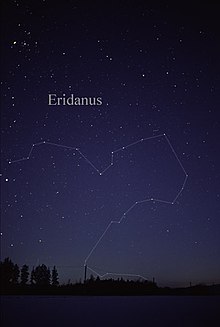
Helios agreed, however, he advised his son to follow the beaten track where he saw wheel marks. Phaeton mounted the chariot and the horses, sensing that the driver was lighter, flew upwards into the sky, leaving the familiar track behind.
Since he lacked experience, the reins slipped from his hands, and the chariot plunged close to the Earth, and the lands caught fire. Some say that this was how Libya became a desert, Ethiopians got dark skin, and the seas dried up.
The event caught the attention of Zeus, who struck Phaeton down to prevent further havoc. A thunderbolt caused Phaeton’s hair to burn, he leaped from the chariot and fell into the Eridanus. Helios, being stricken with grief, did not drive his chariot for days, leaving the world in darkness.
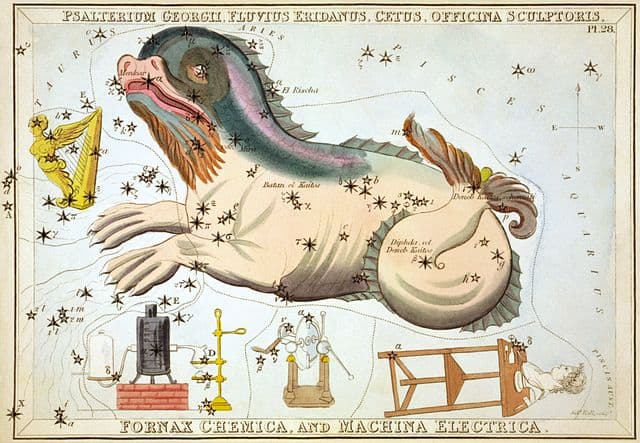
Location
The constellation of Eridanus is the 6th largest constellation in the sky. Eridanus stretches out for over 1138 square degrees. Eridanus is located in the first quadrant of the southern hemisphere (SQ1) and can be seen at latitudes between +32o and -90o.
- Right Ascension: 3.25h
- Declination: -29o
- Visible: between +32o and -90o
- Best viewed: at 21:00 (9 p.m.) during December
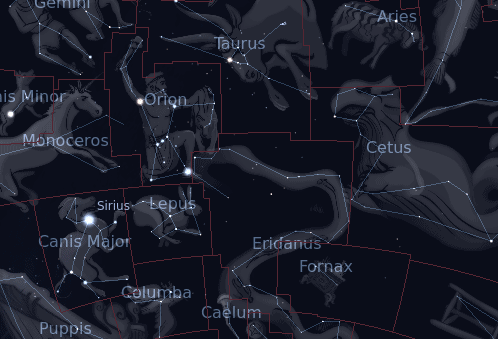
Eridanus is surrounded by the constellations of Caelum, Cetus, Fornax, Horologium, Hydrus, Lepus, Orion, Phoenix, Taurus, and Tucana.
Eridanus belongs to the Heavenly Waters family of constellations, together with Carina, Columba, Delphinus, Equuleus, Piscis Austrinus, Puppis, Pyxis, and Vela.
Notable Stars
Several notable stars are located in the constellation of Eridanus, such as Achernar, Cursa, Acamar, 39 Eridani, 40 Eridani, p Eridani, or Ran which hosts a planet very similar to Jupiter. Achernar is the brightest star in Eridanus, having an apparent magnitude of 0.40.
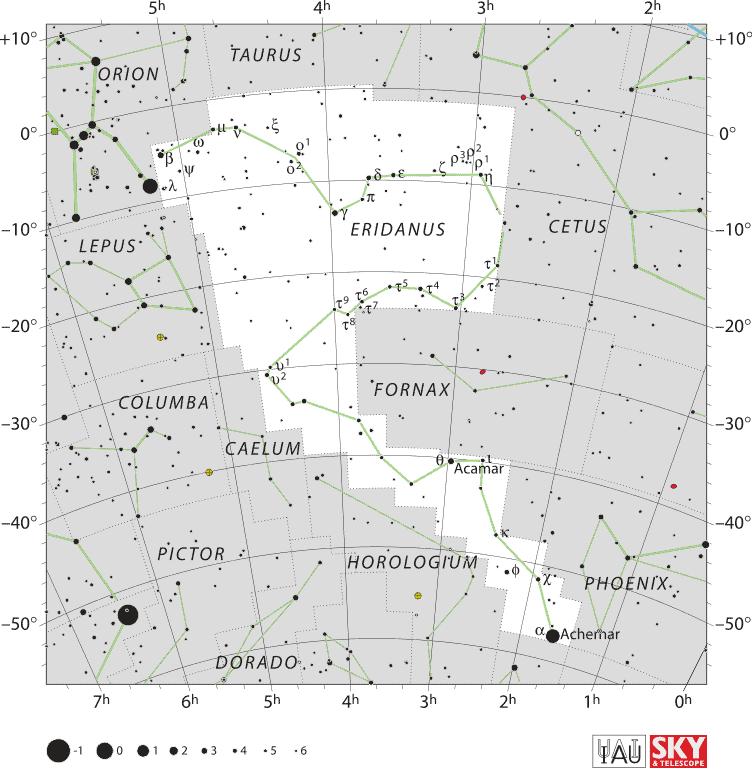
Achernar
Achernar, designated as Alpha Eridani, is the brightest star in Eridanus and the ninth brightest star in the night sky, sometimes sharing the title with Betelgeuse.
Achernar is the hottest and bluest in color out of the ten brightest stars in the night sky. It is a binary system, composed of the blue main-sequence star Achernar A, and an A-type star designated as Achernar B.
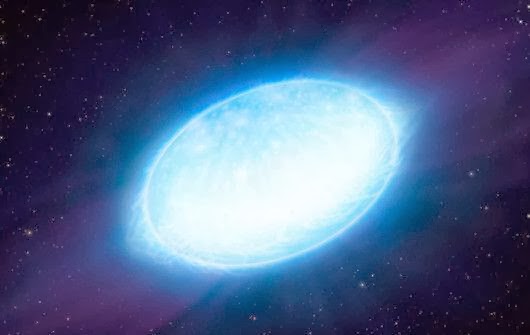
The primary star, Achernar, is the least spherical star in the Milky Way, this is because it spins very fast, having a rotational velocity of around 250 km / 155.3 mi per second.
This causes Achernar to have an equatorial diameter which is 56% greater than its polar diameter, a situation similar to the star Regulus. Achernar is located at around 139 light-years away from us.
Achernar has around 670% of our Sun’s mass, 730% of its radius, and it is 3,150 times brighter than our Sun. The star is also more than twice as hot with temperatures at around 15,000 K.
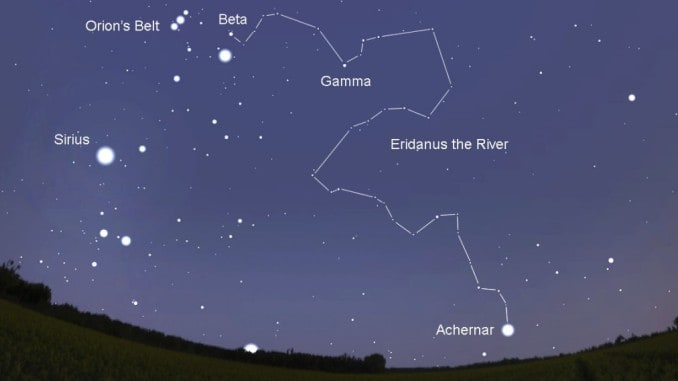
Cursa
Cursa, designated as Beta Eridani, is the second-brightest star in Eridanus, located at around 89.1 light-years away from us, near the border with Orion.
Cursa has an apparent magnitude of 2.796, being 25 times brighter than our Sun. This star is an evolved white-hued giant star that has around 200% of our Sun’s mass, and 240% of its radius.
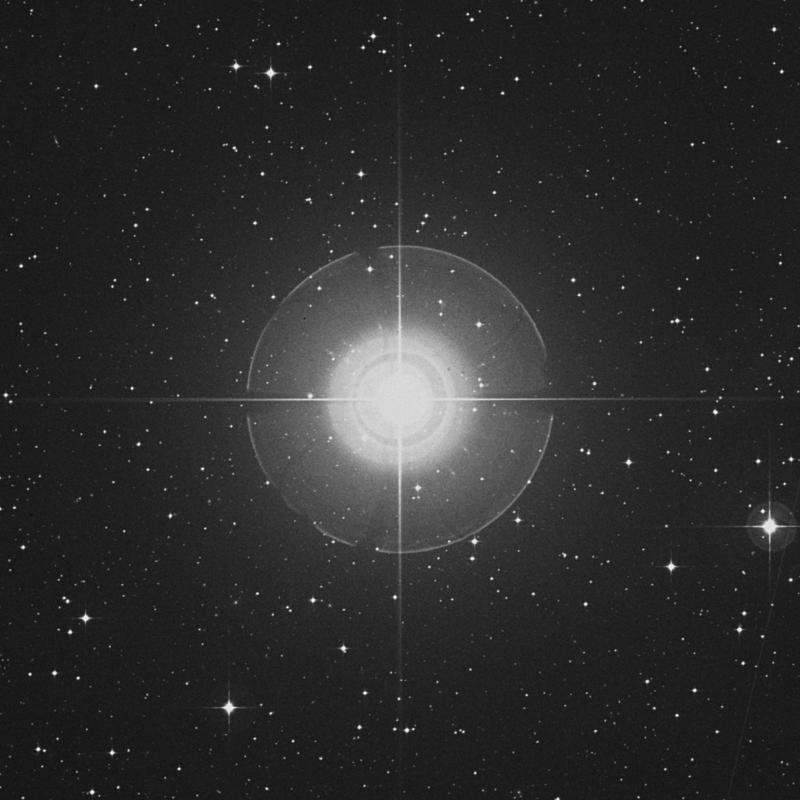
Cursa is also hotter than our Sun, having temperatures of around 8,360 K, and like Achernar, it is a fast-spinning star, with a rotational velocity estimated at around 196 km / 121.7 mi per second.
Acamar
Acamar, designated as Theta Eridani, is a binary system located at around 161 light-years away from us. It has an apparent magnitude of 3.2.
The two stars forming the binary system is comprised out of Theta Eridani1, and Theta Eridani2. Theta Eridani1 is of spectral class A4, being 145 times brighter than our Sun.
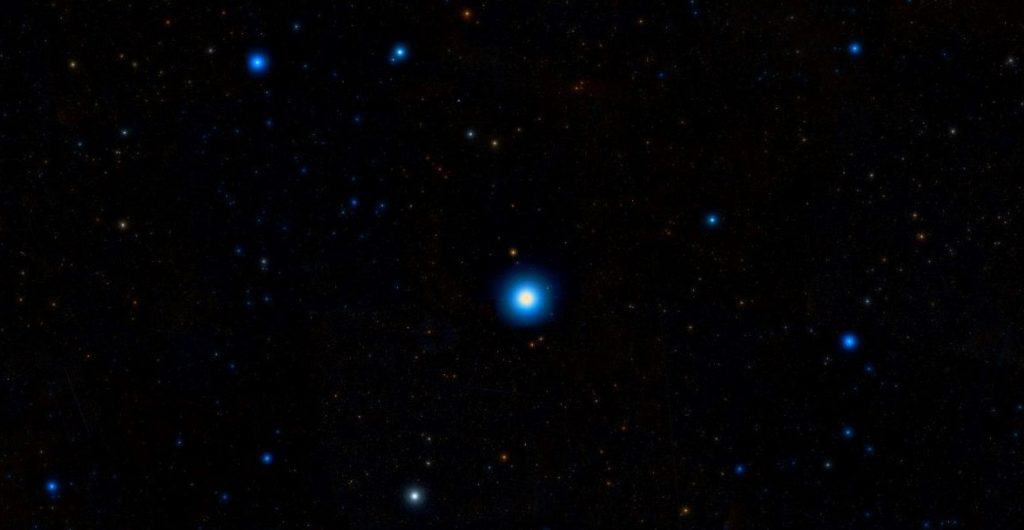
The primary star has around 260% of our Sun’s mass, 1,600% of its radius, and it is much hotter, with temperatures of around 8,200 K.
Theta Eridani2 is of spectral class A1, having an apparent magnitude of +4.3, and being 36 times brighter than our Sun. The secondary star has around 240% of our Sun’s mass, and it is the hottest of the pair, having temperatures of around 9,200 K.
39 Eridani
39 Eridani is a binary star system that has a combined apparent visual magnitude of 4.87. It is located at around 240 light-years away from Earth.
39 Eridani is comprised out of 39 Eridani A, an aging giant star, and 39 Eridani B, a G-type main-sequence star.
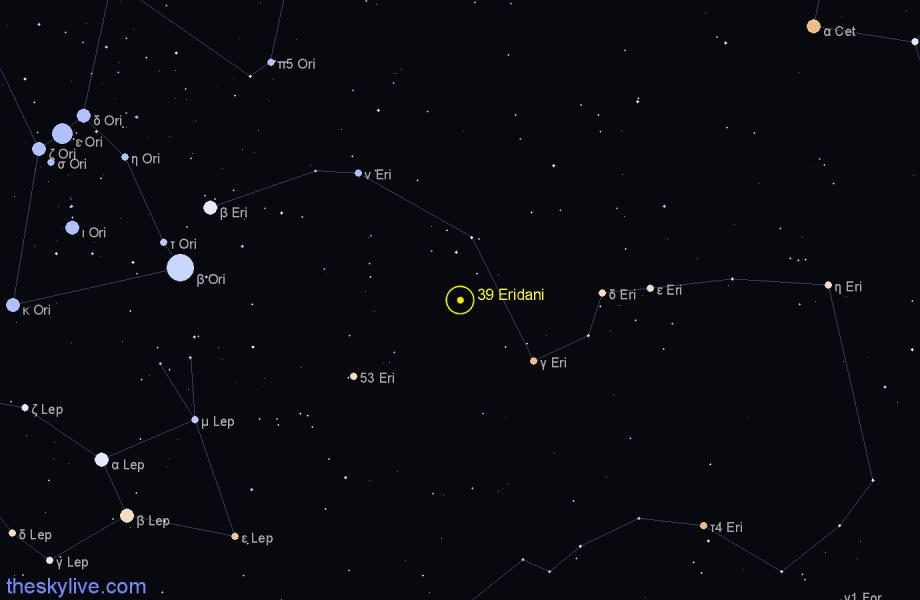
39 Eridani A has an apparent magnitude of 5.07, being 81.3 times brighter than our Sun. It is a super metal-rich star, showing a significant overabundance of iron.
The primary star has around 177% of our Sun’s mass, 1,200% of its radius, however, it is cooler, with surface temperatures recorded at only 4,641 K.
39 Eridani B is 1.3 times brighter than our Sun, having an apparent magnitude of 8.68. The secondary star has around 115% of our Sun’s radius, and its temperature is almost the same as our Sun, 5,816 K.
40 Eridani
40 Eridani, also designated as Omicron2 Eridani, or better known as Keid, is a triple star system located at around 16.26 light-years away from us.
The star system is comprised out of 40 Eridani A, which has an apparent magnitude of 4.43, 40 Eridani B at 9.52, and 40 Eridani C, at magnitude 11.17.
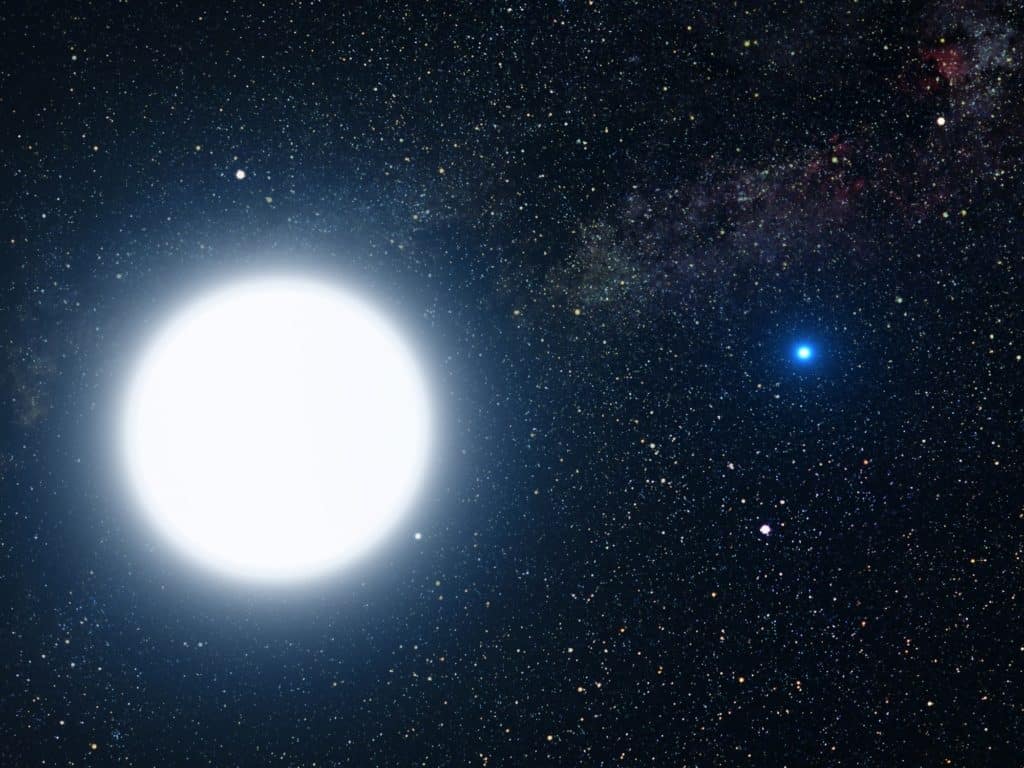
40 Eridani A is a main-sequence dwarf star that has only 84% of our Sun’s mass, 81% of its radius, and it is cooler, with temperatures estimated at 5,300 K.
A planet was discovered orbiting 40 Eridani A. It is a Super-Earth type of planet, being one of the closest to us, and it lies in the star’s habitable zone.
40 Eridani B is a white dwarf star that has only 57% of our Sun’s mass, 1.4% of its radius, however, it is around three times hotter, with temperatures of around 16,500 K.
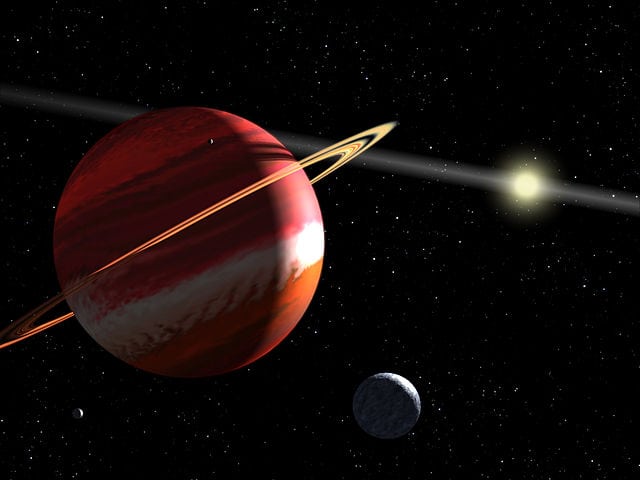
40 Eridani C is a red dwarf star that has only 20% of our Sun’s mass, 31% of its radius, and it is also cooler, with surface average temperatures at only 3,100 K.
p Eridani
p Eridani is also a binary star system, located at around 25.5 light-years away from us. The primary star is an orange-hued K-type main-sequence star, which has an apparent magnitude of 5.87.
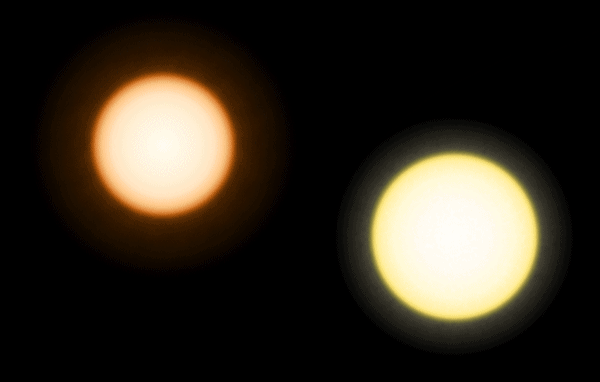
p Eridani is 4.8 billion years old, and it is possibly smaller than our Sun. The star is also cooler, with surface average temperatures recorded at only 5,019 K.
Ran
Ran, designated as Epsilon Eridani, is a Sun-like star that also hosts planets and an inner asteroid belt. It is located at around 10.4 light-years away from the Solar System.
Ran has an apparent magnitude of 3.736, and it is smaller than our Sun, having only 82% of its mass, 73.5% of its radius, and it is also cooler, with temperatures recorded at 5,084 K.
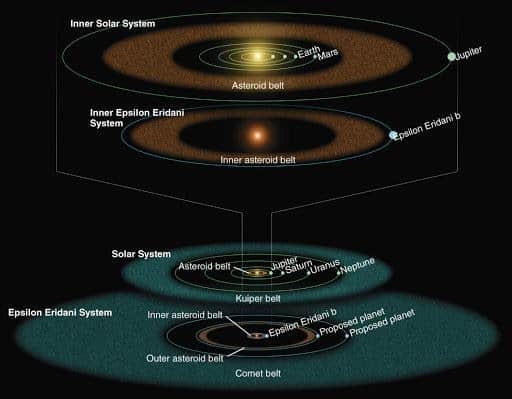
The Epsilon Eridani system contains two belts of rocky asteroids that stretch for 3 AU and 20 AU. One planet has been confirmed orbiting the star, it is named Aegir, while several other planets could reside here, they are yet to offer significant evidence, but chances are high nonetheless.
Zaurak
Zaurak, designated as Gamma Eridani, is a variable star located at around 203 light-years away from us. It has an apparent magnitude of 2.88, and its slow irregular brightness variability can take it to magnitude 2.96.
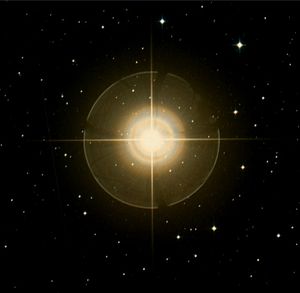
Zaurak is an evolved red giant currently on the asymptotic giant branch of the Hertzsprung-Russell diagram. Zaurak is 1,259 times brighter than our Sun, and it has around 8,000% of our Sun’s mass.
Rana
Rana, designated as Delta Eridani, is a subgiant star, and it is a suspected RS Canum Venaticorum variable star, since its apparent magnitude changes between 3.51 to 3.56.
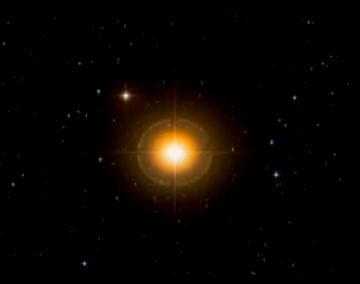
Rana has around 133% of our Sun’s mass, 232% of its radius, and it is 3 times brighter than our Sun. This star is 6.1 billion years old, and it is about to join the red giant branch.
Deep-sky Objects
The constellation of Eridanus hosts many interesting deep-sky objects such as the planetary nebula NGC 1535, the reflection nebula IC 2118, the galaxies NGC 1232, NGC 1234, NGC 1291, or the spiral galaxy NGC 1300.
NGC 1535
NGC 1535, also called Cleopatra’s Eye Nebula, is a planetary nebula that was discovered by astronomer William Herschel in 1785. It is located at around 7,500 light-years away from us.
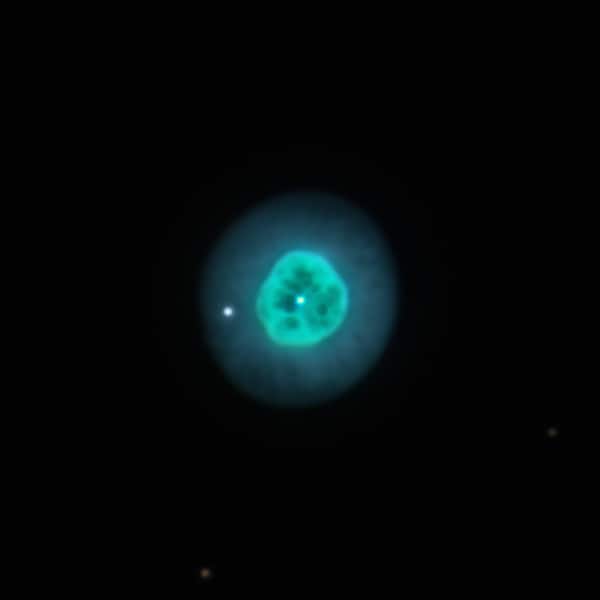
NGC 1535 has an apparent magnitude of 10.5. and it stretches for around 0.625” x 0.611”.
IC 2118
IC 2118, also known as the Witch Head Nebula, is a very faint reflection nebula believed to be the remnant of an ancient supernova that is illuminated by the supergiant Rigel.
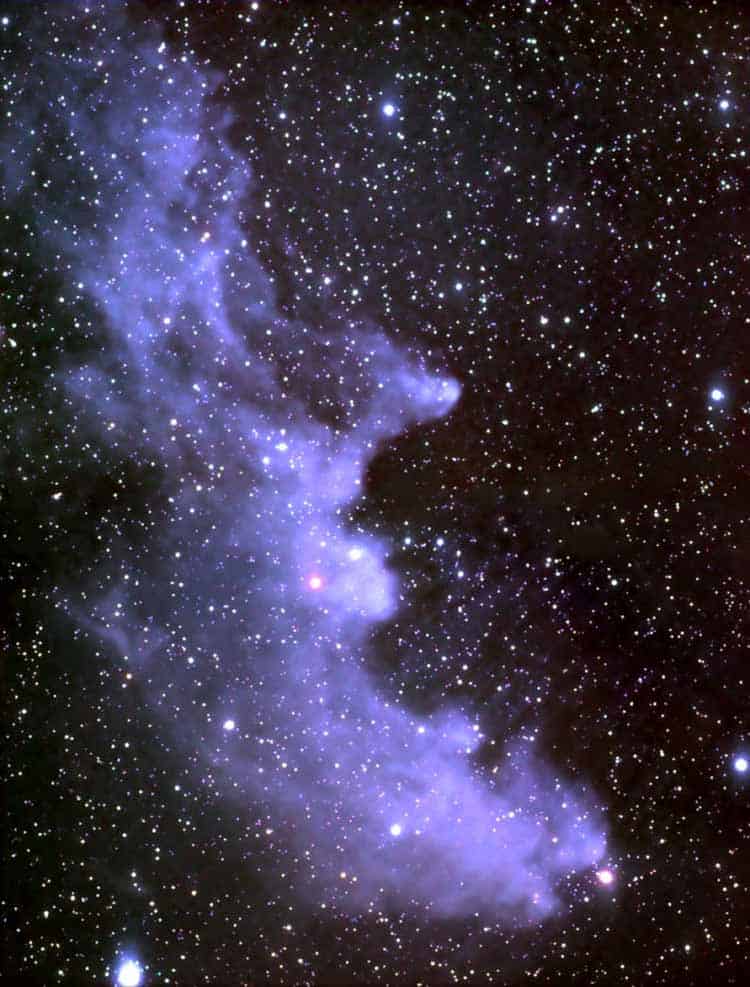
IC 2118 is situated at around 1,000 light-years away from us, and it has an apparent magnitude of 13. The presence of molecular clouds in this nebula contributes to star formation.
NGC 1232
NGC 1232 is an intermediate spiral galaxy situated at around 60 million light-years away. It is dominated by millions of bright stars and dark dust, located in its spiral arms that rotate around the center.
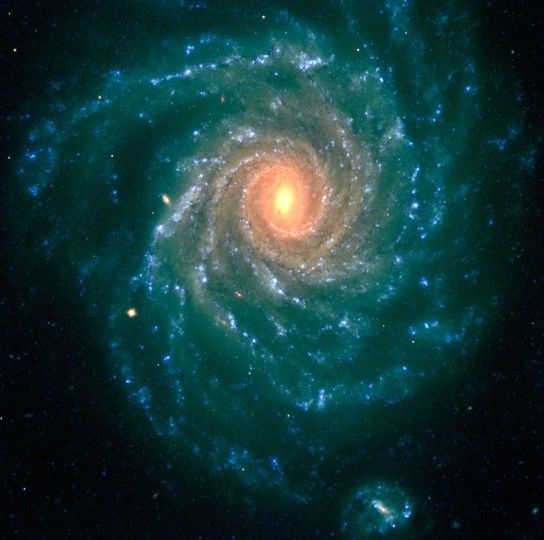
NGC 1232 spreads out for around 200,000 light-years, having an apparent magnitude of 10.9. NGC 1232 is part of the Eridanus cluster of galaxies, along with NGC 1300.
NGC 1234
NGC 1234 is a peculiar barred spiral galaxy exhibiting a ring structure. It was discovered in 1886 by astronomer Francis Preserved Leavenworth. This galaxy has an apparent magnitude of 15.3.
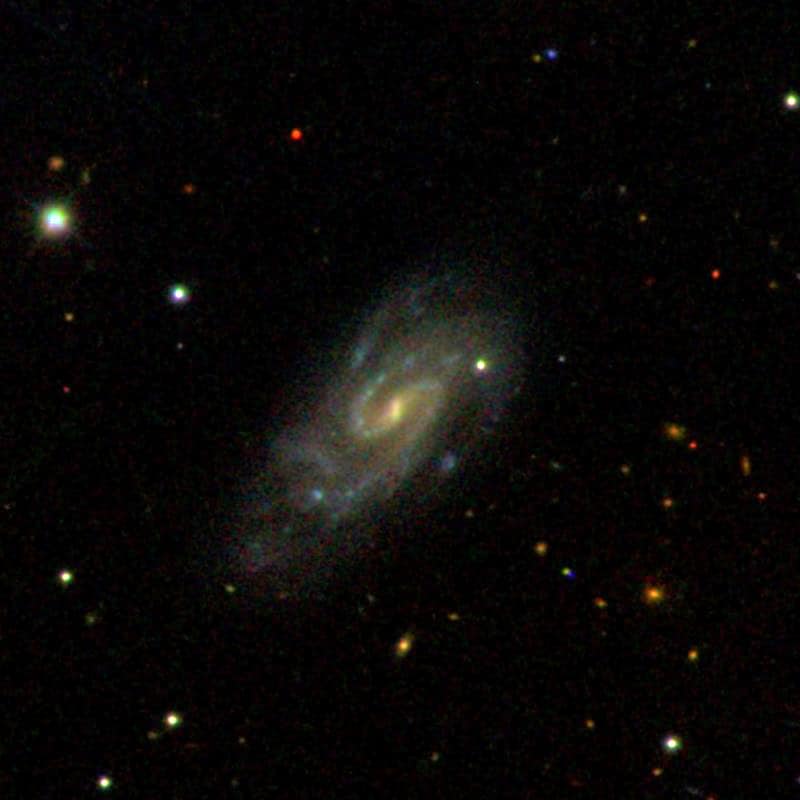
NGC 1291
NGC 1291, also known as NGC 1269, is a ring galaxy with an unusual bar and outer ring structure located at around 33 million light-years away from us. The galaxy has an apparent magnitude of 9.39.
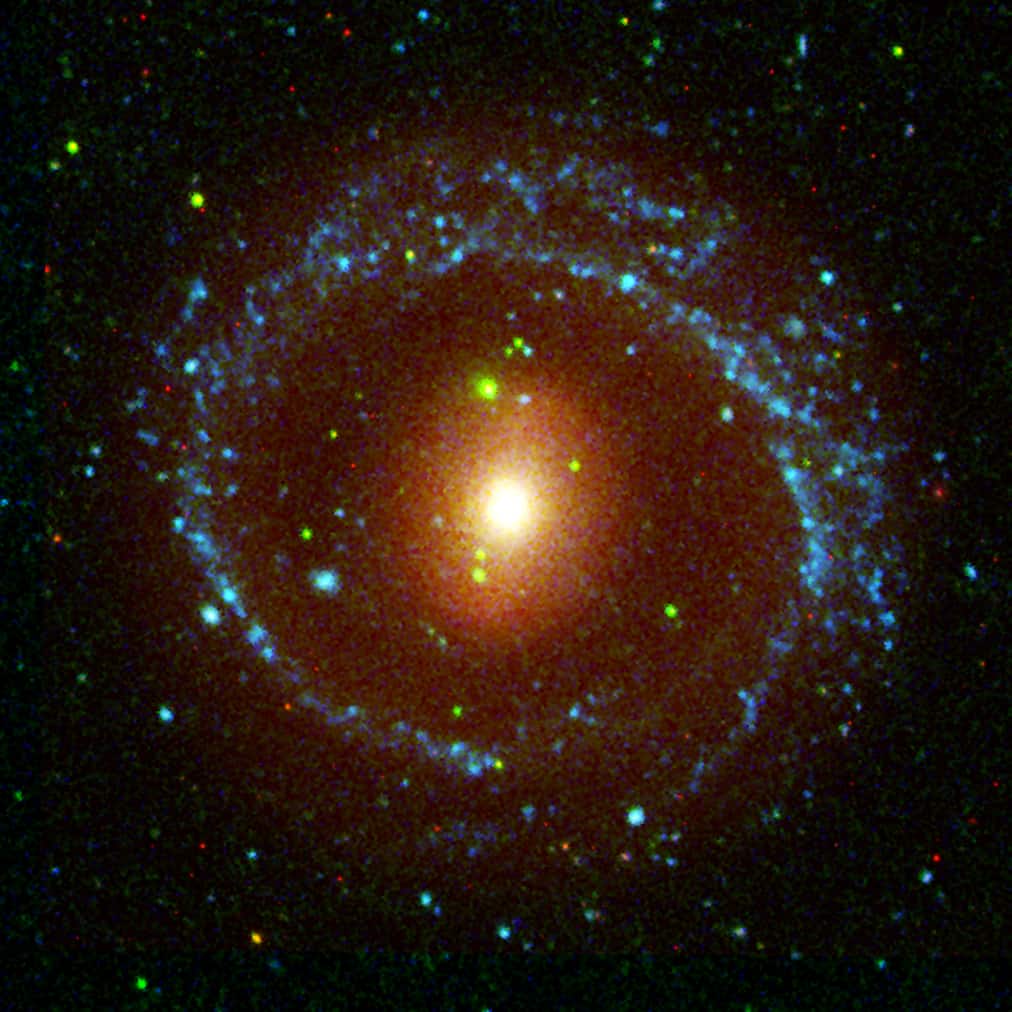
NGC 1300
NGC 1300 is a barred spiral galaxy located at around 61 million light-years away from us. The galaxy is similar in size to our Milky Way, stretching for around 110,000 light-years.
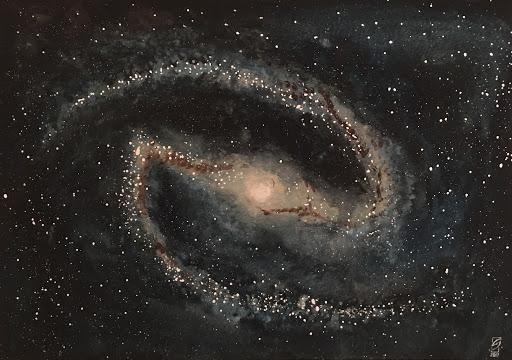
NGC 1300 is a member of the Eridanus Cluster, a cluster that contains around 200 galaxies. It is unknown if this galaxy has an active nucleus. NGC 1300 has an apparent magnitude of 11.4.
Eridanus Cloud
The Eridanus Cloud, also known as the Eridanus Group, is a nearby loose grouping of galaxies at a mean distance of around 75 million light-years.
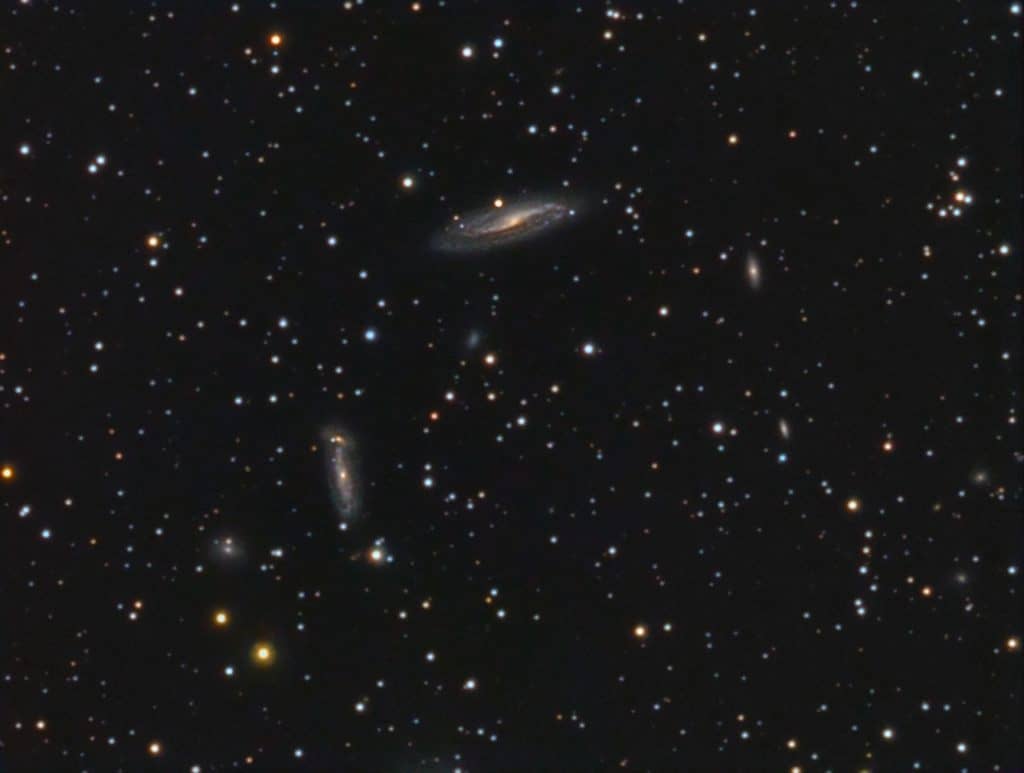
Around 200 galaxies are associated with this group, 70% of which are spiral and irregular type galaxies while the remaining 30% are elliptical and lenticular types of galaxies.
NGC 1531 & NGC 1532
NGC 1531 and NGC 1532 are both small dwarf galaxies that seem to interact with each other. NGC 1532 is the larger galaxy, having an apparent magnitude of 13.1, while NGC 1531 is 12.9, and they are located at around 42.4 million light-years.
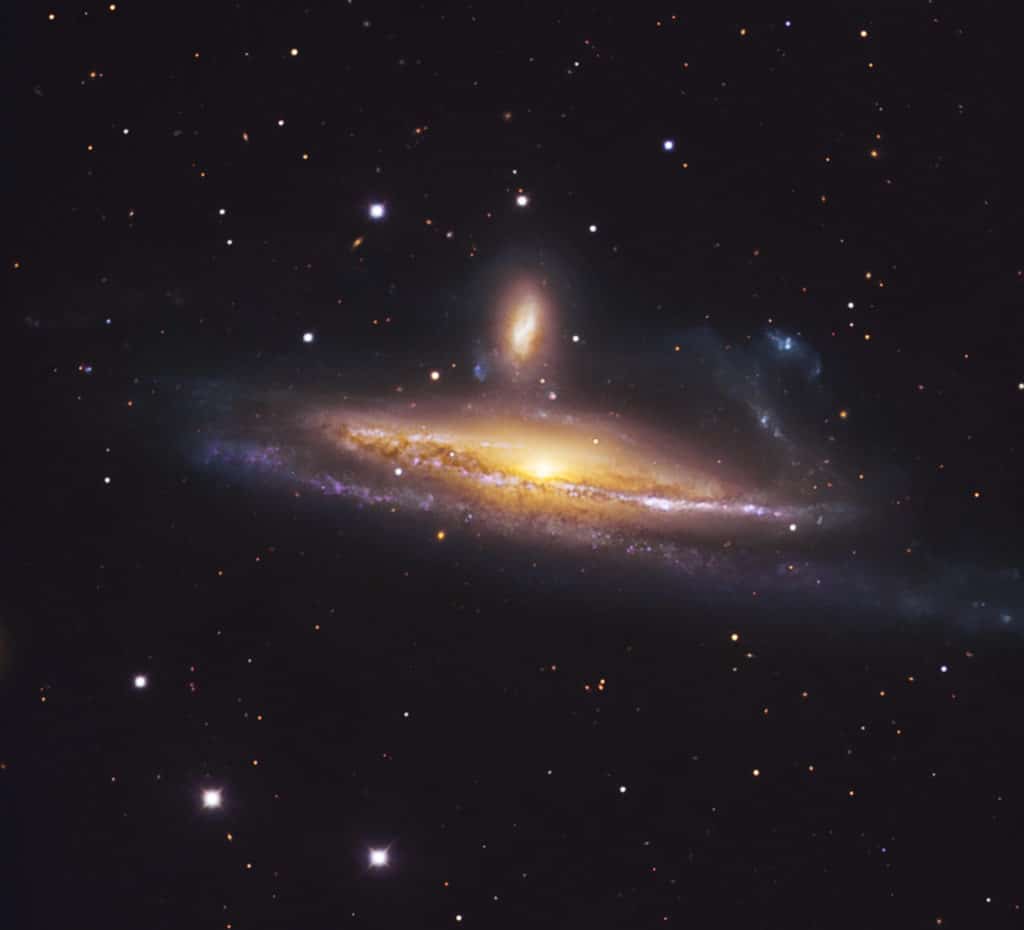
NGC 1427A
NGC 1427A is an irregular galaxy situated at around 52 million light-years away. It is the brightest dwarf irregular member of the Fornax Cluster, and it is in the foreground of the cluster’s central galaxy NGC 1399.
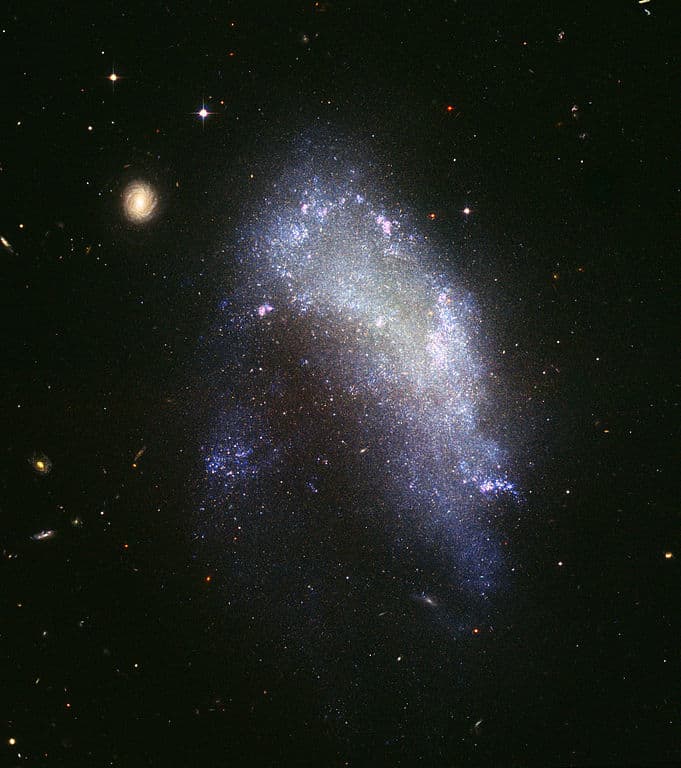
NGC 1427A is similar to the Large Magellanic Cloud, being 20,000 light-years across. It has an apparent magnitude of 13.4.
NGC 1309
NGC 1309 is a spiral galaxy located at around 120 million light-years away. It is around 75,000 light-years across, having spiral arms yet no ring. Bright blue areas of star formation can be observed in its spiral arms.
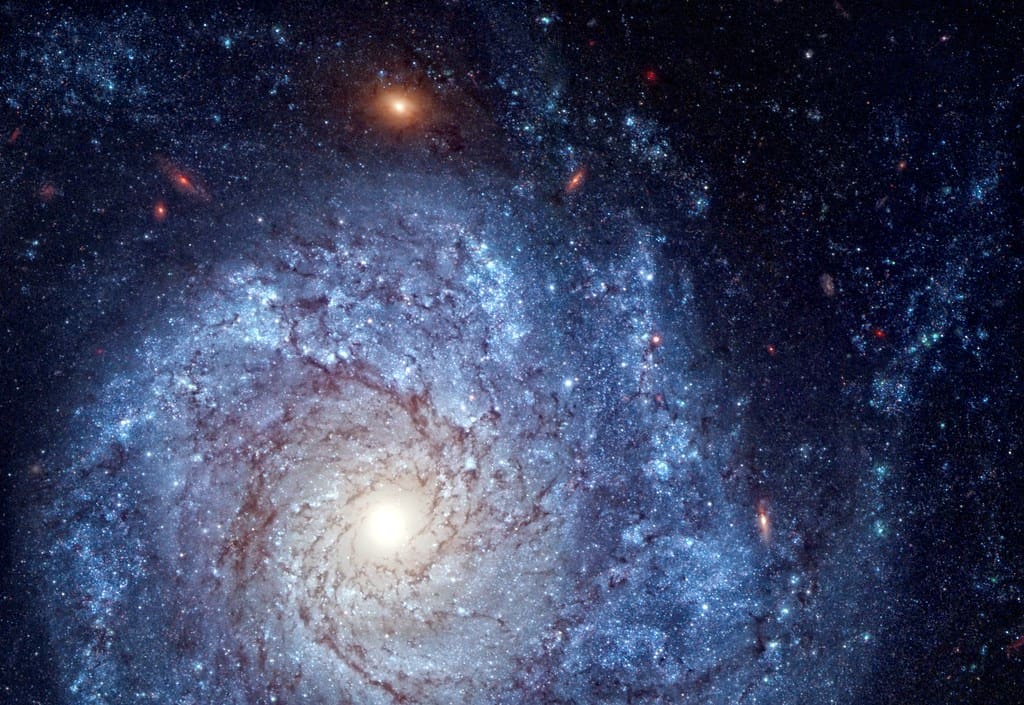
This galaxy is part of the Eridanus Group of galaxies. NGC 1309 has an apparent magnitude of 12.0.
NGC 1187
NGC 1187 is a spiral galaxy located at around 60 million light-years away from us. A couple of supernovas have been observed here. This galaxy has an apparent magnitude of 11.4.
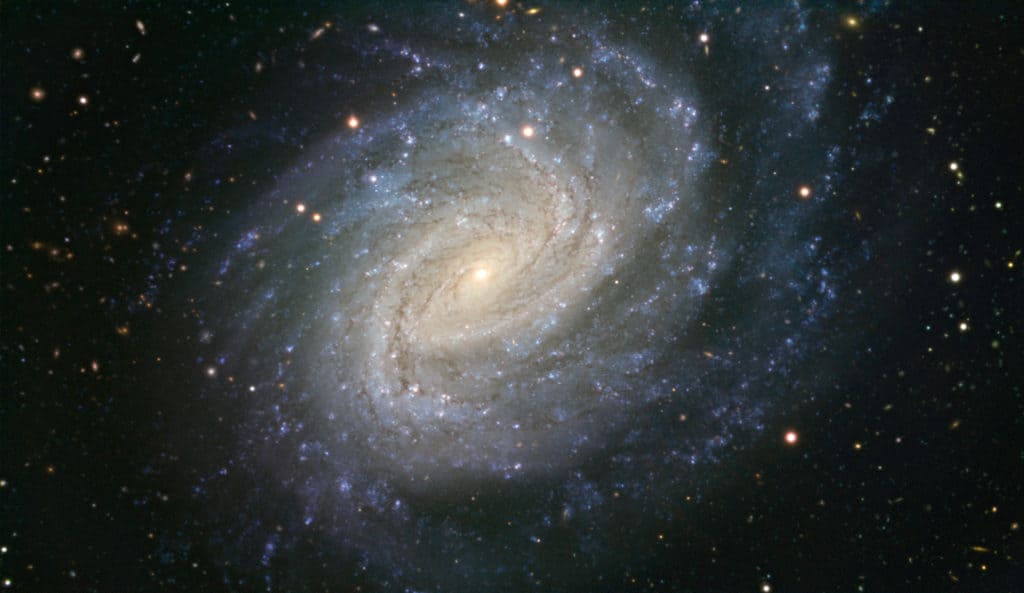
Supervoid
The constellation of Eridanus contains one of the biggest supervoids ever discovered, nicknamed the Eridanus Supervoid or Great Void. It is estimated to be a region quite devoid of galaxies, that stretches between 500 million to 1 billion light-years, and between 6 to 10 billion light-years away.
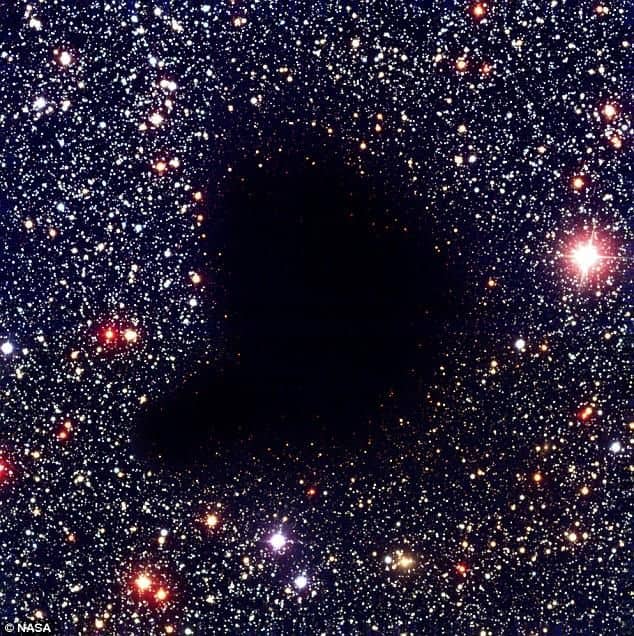
Some believe that the void may be due to quantum entanglement between our universe and another. The only void to surpass the Eridanus Supervoid is the Super Void discovered in Canes Venatici.
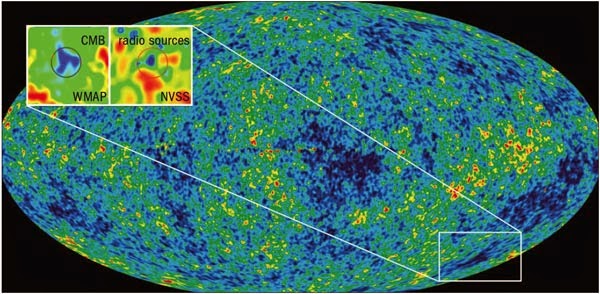
Meteor Shower
For some time, the constellation of Eridanus wasn’t associated with any meteor showers. However, recently, two meteor showers have been discovered, the Nu Eridanids, and the Omicron Eridanids.
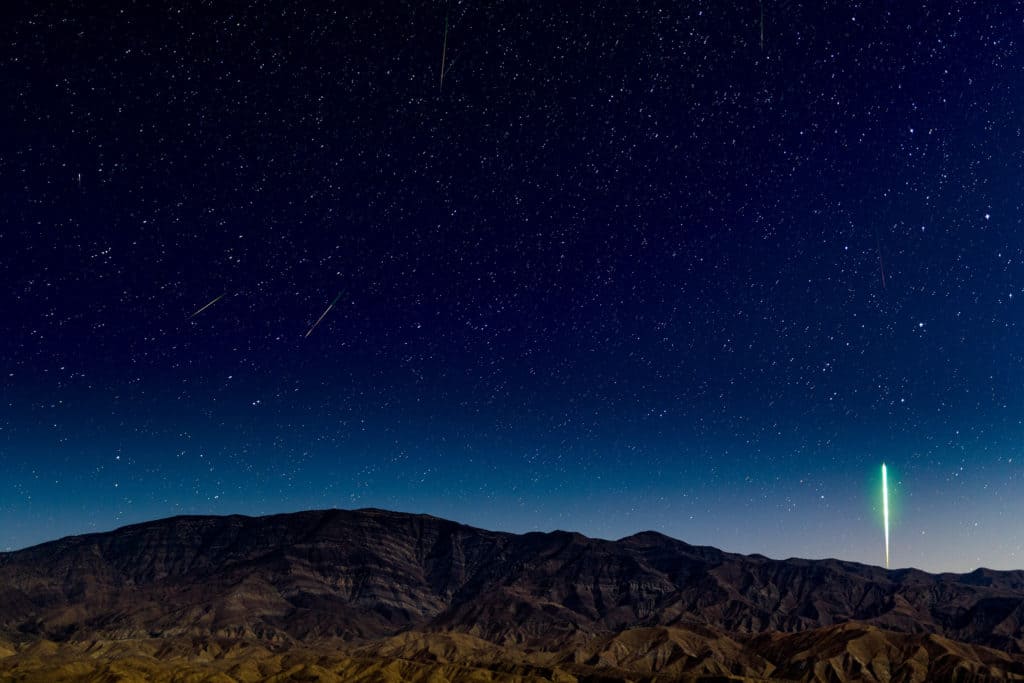
The Nu Eridanids radiate from the constellation between August 30 and September 12 every year, while the shower’s parental body remains an unidentified Oort Cloud object. The Omicron Eridanids peak between November 1 and 10.
Did you know?
- In some maps of the fictional Star Trek universe, the planet Vulcan is shown to be located at 40 Eridani A.
- The stars of the modern constellation of Fornax were formally part of Eridanus.
- Eridanus is called Srotaswini in Sanskrit, meaning the course or stream of the river.
- Many of the stars of Eridanus can’t be seen from China, and thus, the Chinese selected the northern part of Eridanus to be located within the White Tiger of the West, while the unseen southern part was classified among the Southern Asterisms.
- Some theorize that Eridanus takes its name from the Babylonian constellation known as the Star of Eridu – MUL.NUN.KI – Eridu was an ancient city in the south of Babylonia that was sacred to the god Enki-Ea who ruled the cosmic domain of the Abyss – a mythical concept of the fresh-water reservoir below Earth’s surface.
Sources:
Image Sources:
- https://upload.wikimedia.org/wikipedia/commons/thumb/0/08/Constellation_Eridanus.jpg/220px-Constellation_Eridanus.jpg
- https://upload.wikimedia.org/wikipedia/commons/thumb/7/75/Sidney_Hall_-_Urania%27s_Mirror_-_Psalterium_Georgii%2C_Fluvius_Eridanus%2C_Cetus%2C_Officina_Sculptoris%2C_Fornax_Chemica%2C_and_Machina_Electrica.jpg/640px-Sidney_Hall_-_Urania%27s_Mirror_-_Psalterium_Georgii%2C_Fluvius_Eridanus%2C_Cetus%2C_Officina_Sculptoris%2C_Fornax_Chemica%2C_and_Machina_Electrica.jpg
- https://in-the-sky.org/images/constellations/con_ERI_000.png
- https://upload.wikimedia.org/wikipedia/commons/thumb/6/6b/Eridanus_IAU.svg/752px-Eridanus_IAU.svg.png
- https://nineplanets.org/wp-content/uploads/2020/01/achernar11.jpg
- https://www.astronomytrek.com/wp-content/uploads/2016/03/achenar.jpg
- https://theskylive.com/sky/stars/star-images/16/1666_800.jpg
- https://nineplanets.org/wp-content/uploads/2020/02/Achernar-1024×530.jpg
- https://theskylive.com/sky/stars/finder-charts/39-eridani-finder-chart.png?c=1586730295
- https://aasnova.org/wp-content/uploads/2017/10/fig1.jpg
- https://upload.wikimedia.org/wikipedia/commons/thumb/6/6d/Jupiter-mass_planet_orbiting_the_nearby_star_Epsilon_Eridani.jpg/640px-Jupiter-mass_planet_orbiting_the_nearby_star_Epsilon_Eridani.jpg
- https://upload.wikimedia.org/wikipedia/commons/thumb/d/da/Size_epsilon_eridani.png/600px-Size_epsilon_eridani.png
- https://www.astro.com/imwiki/de/thumb/Zaurak.jpg/300px-Zaurak.jpg
- https://lh3.googleusercontent.com/proxy/grAq03jejYY6acGLdXvaHrAychPHbJ1ktXIsbZIY-gKsDQV8GUUdW_kRJKxJp-3Bid1PTJpJHu_7Icv50gVW7nHOmLFSkoCIs38OKSCpXuZeyRio3Q
- https://lh3.googleusercontent.com/proxy/zNAKExAb5REhhcPlVEGjUmxAf8WaV6KUrp5mY1QzzFFCSwiSsATDsj5dScvhgGqpNfA6RTm3_kD3_NGnKWmZODquUspN4IBwDQDQ2xLRquP91snvvqZUxtH0k03PoRmyeA
- https://upload.wikimedia.org/wikipedia/commons/e/ec/N1535s.jpg
- https://upload.wikimedia.org/wikipedia/commons/3/32/Reflection.nebula.arp.750pix.jpg
- https://i.pinimg.com/originals/8d/47/0f/8d470f2ea9e679413c0a5f2c9521746f.jpg
- https://upload.wikimedia.org/wikipedia/commons/8/8e/NGC1234_-_SDSS_DR14.jpg
- https://upload.wikimedia.org/wikipedia/commons/4/4b/NGC_1291_GALEX.jpg
- https://lh3.googleusercontent.com/proxy/o5M_-9LuPKdO2wvM9ESvyntUki2k1jUaG7VAnTdytSI551vK2vSu-tzxnpp6_crY-IIby9CyNoW2-mF0AwT3TXI3qwZcIAT8yuqUpbh2JUX4dZeiv9pjtJs
- https://www.webbdeepsky.com/images/galaxies/138243697_JArsenmh_n6928.jpg
- https://upload.wikimedia.org/wikipedia/commons/1/15/ESO_-_Ngc1532_gendler_%28by%29.jpg
- https://upload.wikimedia.org/wikipedia/commons/thumb/b/b7/Irregular_galaxy_NGC_1427A_%28captured_by_the_Hubble_Space_Telescope%29.jpg/681px-Irregular_galaxy_NGC_1427A_%28captured_by_the_Hubble_Space_Telescope%29.jpg
- https://live.staticflickr.com/3838/14663086657_3710af4ce6_b.jpg
- https://upload.wikimedia.org/wikipedia/commons/e/ee/VLT_image_of_the_spiral_galaxy_NGC_1187.jpg
- https://i.pinimg.com/originals/a5/16/b2/a516b29f6a57202fc4af386dfd747b14.jpg
- https://4.bp.blogspot.com/-N_tca5RPlMw/U6oUNLeAV6I/AAAAAAAAJME/BTeMnd8dZtI/s1600/CCast1_08_07.jpg
- https://www.imo.net/wp-content/uploads/2017/08/meteor_w36.jpg
